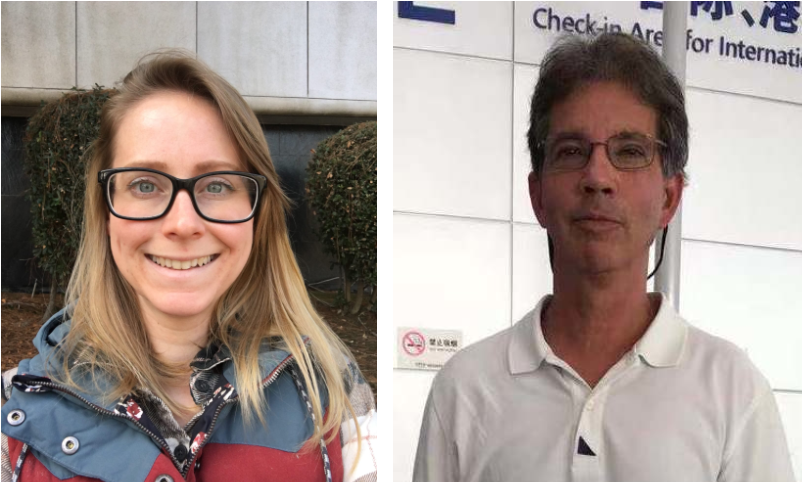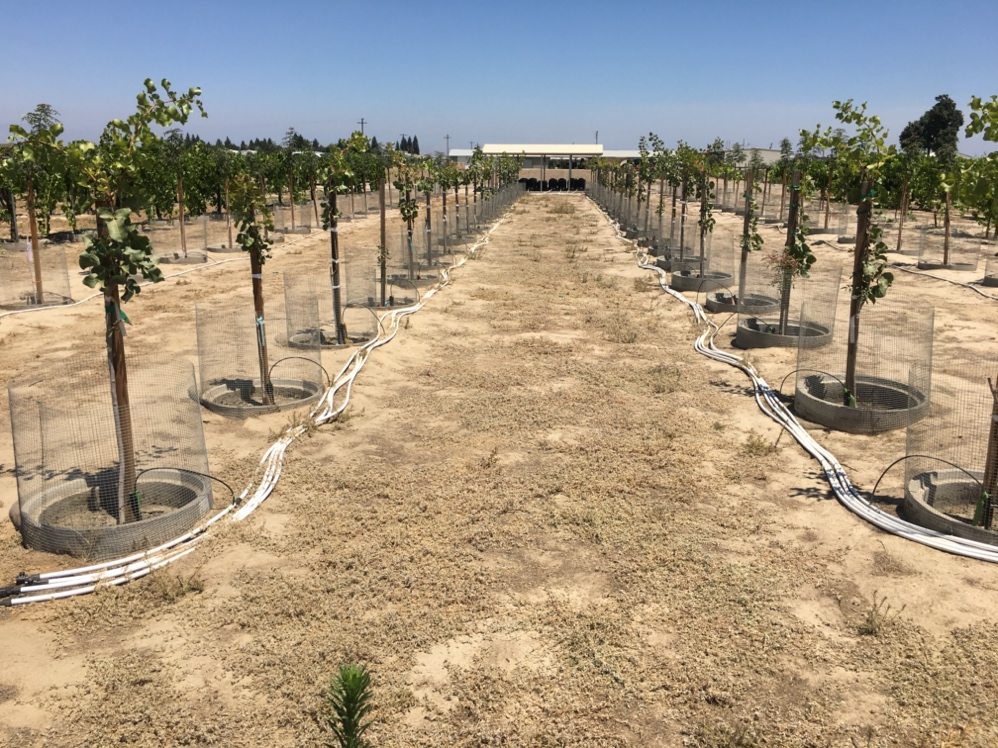Introduction:
This is the second article in a monthly series discussing research funded by the California Pistachio Research Board. This month we are featuring projects addressing salinity in the soils and water of the California’s Central Valley. When choosing an orchard site climate is the first and most important factor, little or nothing can change climate. The second factor in site selection is soil borne pathogens which, if they cannot be controlled, eliminate planting sites. Those with a long history in the pistachio industry will remember the threat posed by Verticillium wilt, (Verticillium dahlaie) the soil borne fungus that decimated the pistachio industry in the late 1970s. Verticillium wilt is now virtually unknown due to the introduction of the tolerant Pioneer Gold I (Pistacia integerrima) and the resistant UCBI hybrid (P. Atlantica X P. integerrima) rootstocks. The third most important factor in choosing an orchard site is soil and water quantity and quality. Unfortunately, in California, where the climate is good for pistachio production, the water quantity and quality are both becoming marginal. Quantity may not be under our control but quality can be managed within limits. The two research projects featured this month are investigating salinity with the final objective of developing information that will result in better salinity management practices conditions. The first, “Long Term Saline Irrigation Strategies for Pistachios on PGI Rootstock” is led by USDA Research Scientist Dr. Gary Banuelos. The second, “Evaluation of Salinity, Boron and Soil Hypoxia on Pistachio Tree Growth” is led by UCCE Madera County Farm Advisor Dr. Phoebe Gordon.
Long Term Saline Irrigation Strategies for Pistachios on PGI Rootstock
Dr. Gary Banuelos is cooperating with Drs. Kaoming Vang, Gurreet Brar and Sharon Benis of California State University Fresno State, Monika Sommerhalter, California State University Ph.D. candidate, Irwin Arroyo of UC Merced, and Drs. Giulia Marino and Louise Ferguson of UC Davis in the project “Long Term Saline Irrigation Strategies for Pistachios on PGI Rootstock”, now in the second year of field experiments. To understand the why this project is important it is helpful to understand the geology that produced the composition and structure of the San Joaquin Valley soils. When first formed, the San Joaquin Valley was an inland sea between two mountain ranges, one, the Coastal Range is sedimentary in origin. When this inland sea filled with sediments from the sea and the surrounding mountains it became the sediment filled depression, or basin, that is now the Central Valley. The origin as a seabed and the runoff from the Coastal range concentrated salts in the soil, sodium, boron, chloride, and selenium. Irrigated agriculture added more salt to the soil. Finally, unlike most coastal lands that have drainage to the ocean, the Valley has inadequate or no drainage. The result of the San Joaquin Valley’s geologic origins with high natural salts, the addition of salts with fertigation, and no natural drainage, has resulted in increasing salinity, a concentration of sodium, boron, and chloride ions in the soils and water, in California’s best tree crop climates; a situation that will only get worse.
Retired Kern County Farm Advisor Blake Sanden and University of California Extension Specialists Steven Grattan and Louise Ferguson began investigating the salinity tolerance of pistachio rootstocks in the 1990s. They demonstrated differences in rootstock salinity tolerance ranking; Atlantica> P. atlantica x P. integerrima (AKA PGII) > P. integerrima x P. atlantica (AKA UCBI) > P. integerrima (AKA PGI) and decreased yield on the two currently commercial seedling rootstocks, PGI and UCBI. In the most recent field study, 10-year-old trees over the three final years of full bearing had a statistically significant cumulative marketable yield reduction of 145 lb./acre (1%) for trees on UCBI rootstocks and 352 lb./acre (3%) for every unit ECe > 6.5 dS/m. On the basis of this accumulated research approximately150,000 acres of California pistachios are now planted in saline ground and irrigated with saline water. As the soil and water supplies are not going to change, and pistachio orchards will continue to be fertilized, retired USDA Soil Scientist, Dr. James Ayars quote; “Salinity … is irrevocably associated with irrigated agriculture…” has become even more pertinent. Salinity will not go away. But it can be managed. Thus far, salinity research has focused on the effects of salinity, but not the management, or reclamation.
Developing management and reclamation strategies are the objective of the Long-Term Saline Irrigation Strategies for Pistachios on PGI Rootstock project. To do this requires the ability to measure changes in soil salinity and soil moisture in real time, as it is changing, and correlate these changes with tree responses. Instrumentation to measure tree responses has been available for some time, but accurate salinity soil monitoring techniques are only now becoming available. Previously in-orchard salinity experiments relied on laboriously collected soil samples, collected after the effects of salinity had been exerted on the tree, to determine ion levels and movements in the soil. Now in-dwelling sensor technology can measure salinity and ion concentrations in real time. These real time soil measurements, coordinated with measurements of tree response, will give a much better assessment of when, and how, to manage salinity.
The trial is located in three blocks of Kerman pistachios on PGI, the rootstock most sensitive to salinity, in the Panoche Drainage District, grown in saline soils with saline water (EC of 4-6 dS/m, B of 5-8 mg/L, Na of 950-1250 mg/L and Cl of 960-1400 mg/L) since 2002, 2009, and 2011, respectively. The project has two objectives. First, to determine the effects of long-term saline irrigation on the movement and accumulation of Na, Cl, and B ions in saline soils and correlate with salinity’s effects on the physiology, growth, and yield of trees of Kerman pistachios on a PGI rootstock. The second objective is to compare the recovery of saline soils and trees when initiating irrigation with non-saline water (~ 1.0 dS/m) versus soils and trees continuing to receive saline irrigation. An example of the sensing technology results is given in Figure 1. For clarity, soil salinity was expressed in the figures as saturation paste Ec (dS/m) to more clearly represent measurable soil salinity for growers. Generally, irrigation with non-saline or saline water initially leeches soluble salts past the sensors and results in a temporary increase of soil salinity at time of irrigation but over time, the overall salinity decreases with non-saline water and increases with saline water irrigation. For only one irrigated season, it is understandable that these effects were most clearly observed at the 30 cm depth. With time, clearer responses to non-saline and saline irrigation are to be expected at 90 cm. No responses were observed to either form of irrigation at 180 cm, indicating that it will take more irrigation for a longer time period but also indicates that groundwater upwelling did not contribute to the soil salinity.
The overall experimental strategy will be to simultaneously monitor the real time changes in soil EC and the physiological responses of the tree; tree water status, photosynthesis, photosynthetic pigments, total phenolics, uploading of proline for salt tolerance, anti-oxidant activity and ion accumulation. This coordinated information will enable a real time assessment of the efficiency of saline reclamation strategies. The data collected in 2019 verified the ability of in-dwelling sensor technology to monitor soil salinity. Now the experiment must be continued for at least two bearing cycles to determine irrigation and reclamation values and verify the reliability of the sensing technology.
In addition to determining the coordinated soil and water salinity, and tree responses, required for saline irrigation management and reclamation, this experiment is important for the possibilities it suggests. This experiment is among the first steps toward implementing precision agriculture in orchard crops. Currently the sensing technologies deployed in this experiment are research tools, but in time these technologies will become cheaper, more user friendly, coordinated in real time, and ultimately can be digitally coordinated to direct irrigation and fertigation. This experiment is among the first steps in developing precision agriculture for orchards.
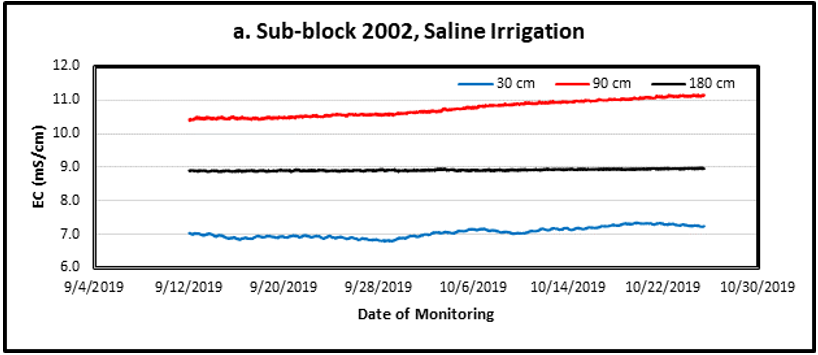
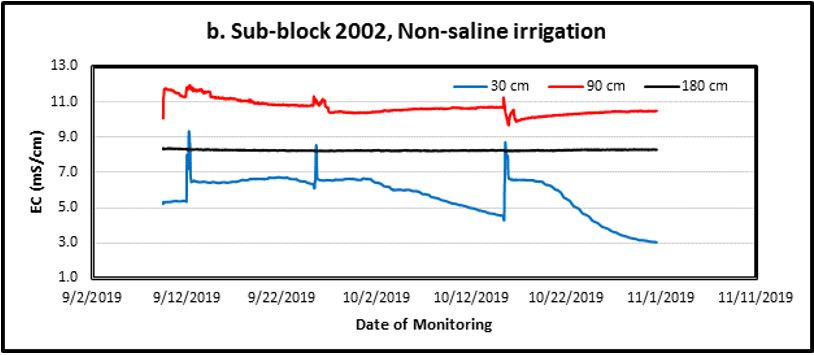
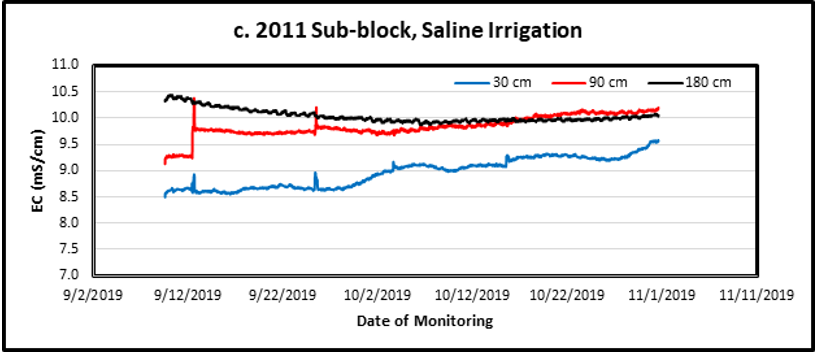
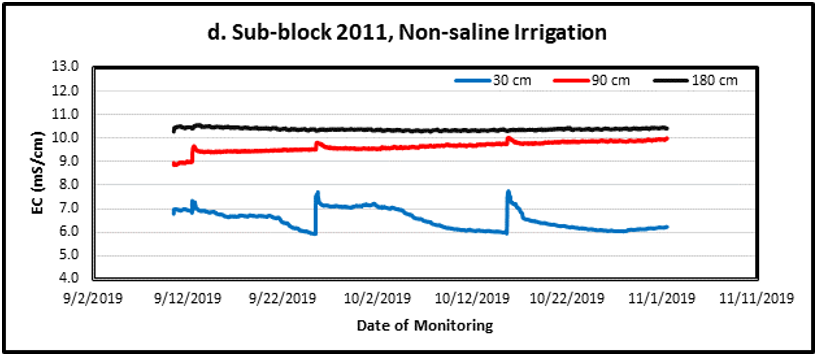
Evaluation of Salinity, Boron, and Soil Hypoxia on Pistachio Tree Growth
The second project highlighted in this issue is “Evaluation of Salinity, Boron, and Soil Hypoxia on Pistachio Tree Growth.” This new project is led by Dr. Phoebe Gordon, UCCE Madera County Farm Advisor, Dr. Gary Banuelos of the USDA-ARS, Water Management Research Unit in Parlier, Dr. Giulia Marino from the Department of Plant Sciences, University of California Davis in collaboration with Fresno County Farm Professor of Plant Nutrition Dr. Patrick J. Brown, and Orchard Systems Extension Specialists, Drs. Bruce Lampinen and Louise Ferguson. Similar to Dr. Banuelos’s project, the overall objective of this project is a better understanding of how salinity interactions in soil and water affect plant performance. And, like Dr. Banuelos’s project, it has a final objective of developing better salinity management practices.
The multiple pistachio greenhouse, lysimeters and orchard trials of salinity have all demonstrated decreased growth with increasing salinity due to osmotic effects of reduced water uptake and specific ion damage in the leaves. Thus far tree crop salinity research has relied upon a final single integrator of salinity, ECe, and a final single indicator of tree performance, marketable yield, and at times, visible leaf damage. However recent research suggests that the traditional method for measuring salinity, soil electroconductivity, ECe, does not consistently correlate well with in-field growth and yield responses. To address this inconsistency Dr. Gordon will investigate the specific effects of sodium in saline soils. Sodium destroys soil structure precipitating saturated, low oxygen conditions. Little research on pistachio salinity tolerance has examined root zone oxygen levels. The first research objective of this trial is to separate the effect of periodic, short-term low oxygen conditions from the osmotic effects of salinity, on pistachio growth and yield.
Salinity is also linked with high boron, particularly in the soils of the Saa Joaquin Valley’s lower Westside where runoff from the sedimentary Coastal Range has produced a broad alluvial fan with high sodium, chloride and boron levels. Little information has been developed on the salinity-boron interaction effects on pistachio growth and yield; a situation that is likely to worsen as the current pistachio rootstocks have a high boron requirement resulting in frequent soil and foliar boron applications. Boron is difficult to leach, quickly building up in soils. The second objective of this trial is to determine the interaction of boron and salinity in soils and on pistachio growth and yield.
The trial is being conducted within the USDA San Joaquin Valley Agricultural Sciences Center (Parlier, California). where trees have been planted in concrete pipes approximately 1.2 to 1.5 meters in depth, essentially individual lysimeters, have been buried in the field (see Figure 2.) In this initial year the trees will be established and the saline treatment delivery system, hypoxia inducing structures, and sensing instrumentation will be installed and tested for the ability to produce the desired treatment levels and accurately monitor the soil and trees.
This trial will better define the interaction of hypoxia and boron in saline soils and how they affect pistachio tree growth and yield. The final objective is to develop irrigation and fertilization management strategies for pistachios grown in saline soils. This trial will run for 4 to 6 years.
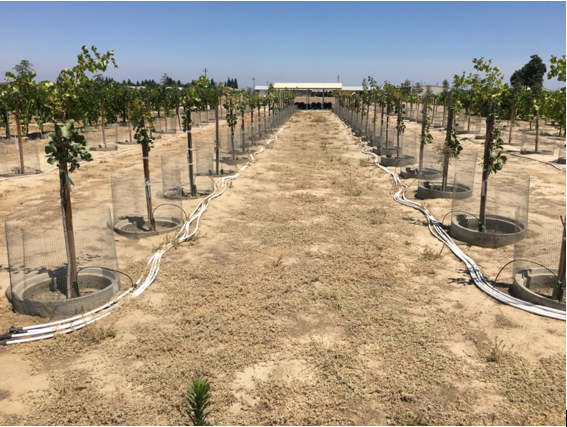
Conclusion
The California Pistachio Research Board has continuously supported salinity research since 1994; producing the most exhaustive set of long term tree crop salinity trials in the world. The early results generated by these trials have already had a major effect on the California pistachio industry with about 150,000 acres planted in saline soils with saline water supplies. The investigations discussed here will extend this impact with better monitoring and management practices. And the recent more basic physiological results produced by Drs. Jessie Godfrey, Maciej Zwieniecki, Georgia Drakakaki and Louise Ferguson of the Department of Plant Sciences at UC Davis demonstrating how different pistachios rootstocks exclude, sequester and cycle sodium and chloride will have an even greater impact. This research demonstrating the greater long-term impact of this salinity research will be discussed in next month’s column featuring the rootstock breeding programs of UCCE Kern County Farm Advisor Craig Kallsen in cooperation with plant breeders Drs. Patrick H. Brown and Dan Parfitt, Professors in the Department of Plant Sciences at UC Davis.
